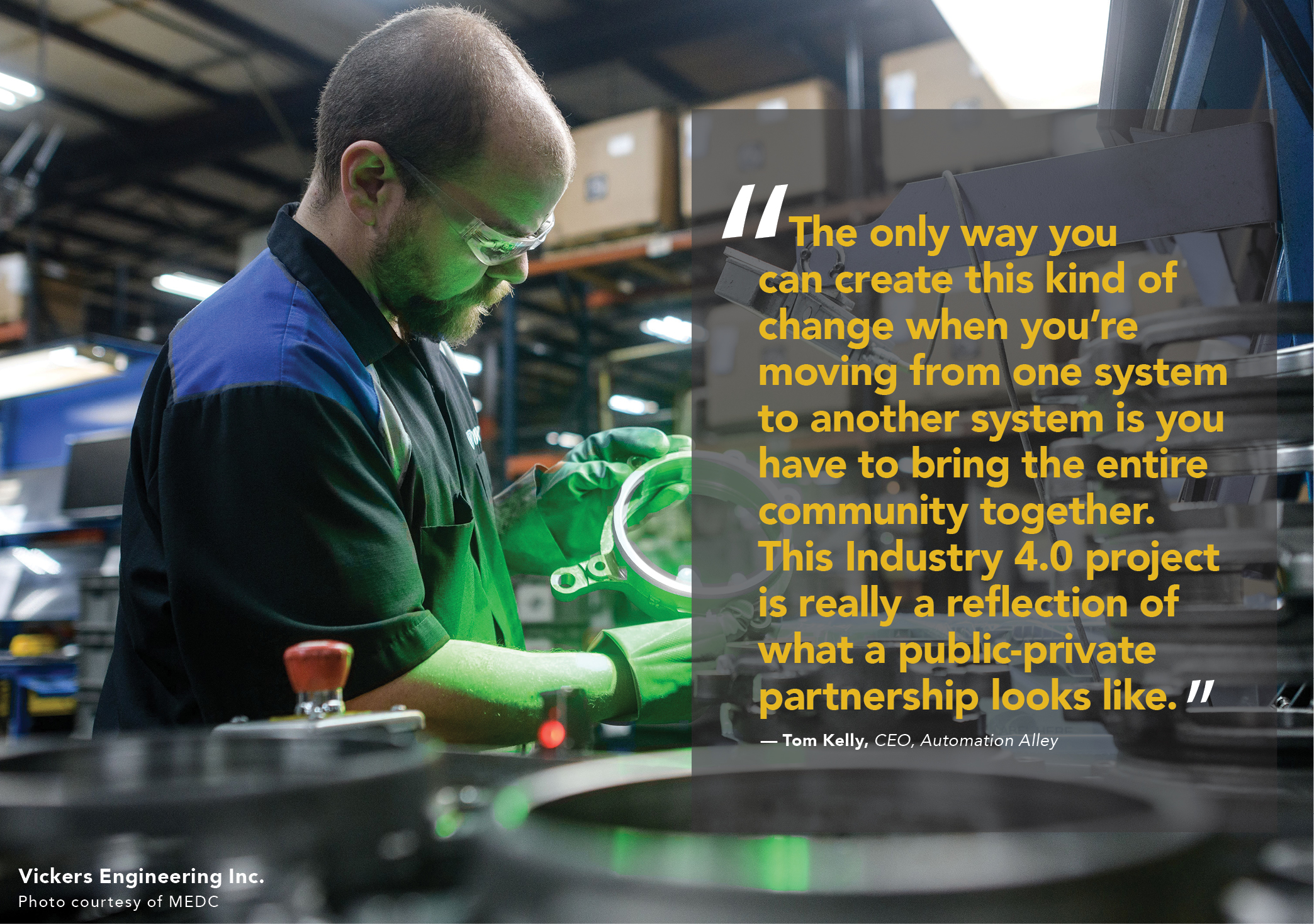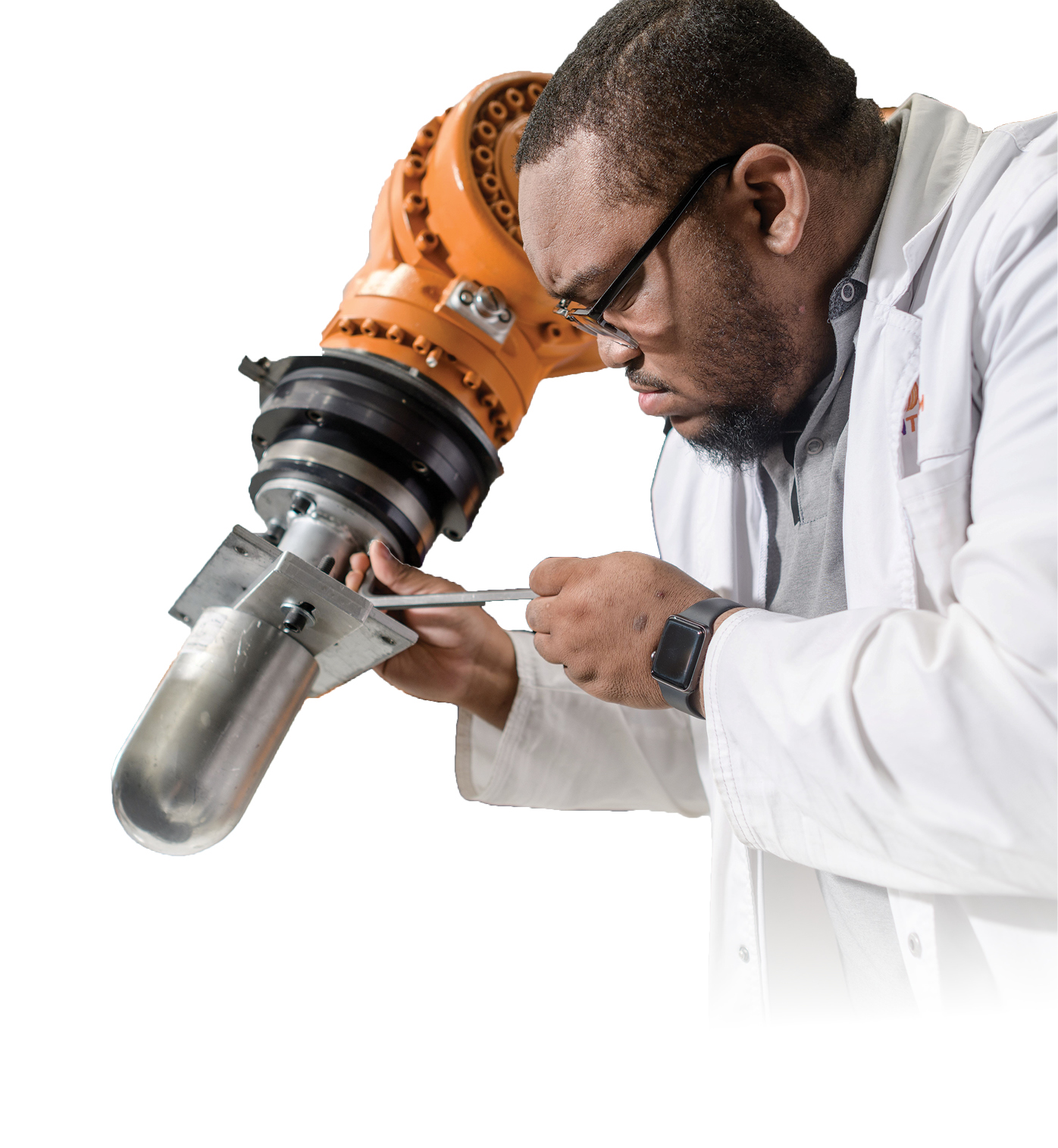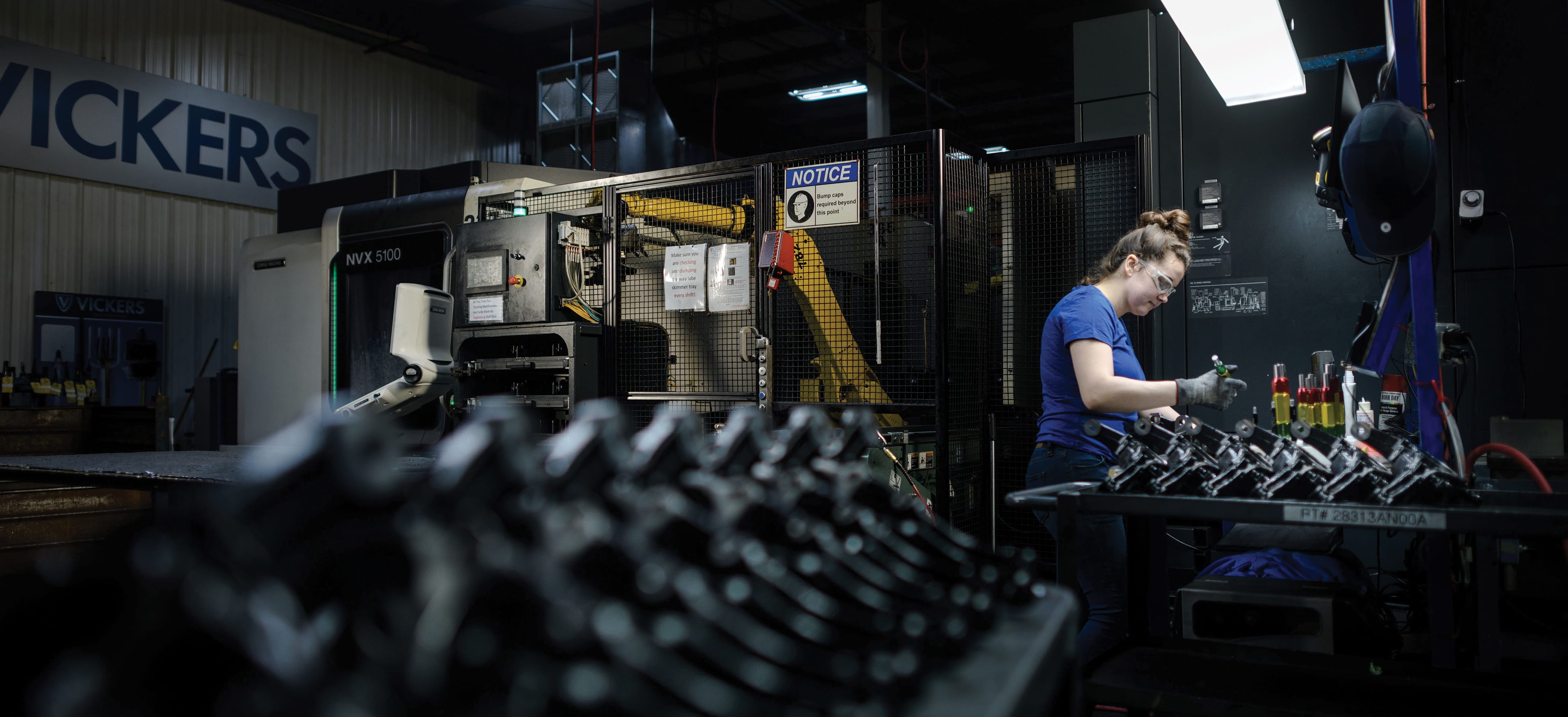Steam drove the original Industrial Revolution; electricity powered the second; initial automation and machinery engineered the third; and cyber-physical systems are shaping the fourth. And once again, Michigan is at the helm of this monumental shift in manufacturing.
During the second industrial revolution, Michigan cemented its legacy as an industry leader with innovations like Henry Ford’s automobile and the assembly line. By the start of the 20th century, GM and Chrysler (now Stellantis) joined Ford to lead the automotive industry in Michigan.
And yet again, as we stand on the brink of the next industrial revolution, the Great Lakes State remains ahead of the game.
The Fourth Industrial Revolution, commonly referred to as Industry 4.0, is the latest phenomenon to majorly impact manufacturing. Industry 4.0 is the merging of digital and physical technologies, including artificial intelligence (AI), 3D printing, robotics, augmented and virtual reality, the cloud and cybersecurity.
Recently, this wave of innovation became a local focus when Michigan declared the non-profit Automation Alley its official Industry 4.0 knowledge center. The organization educates manufacturers and the government about Industry 4.0 technologies and how these innovations will affect businesses.
“All of our businesses tended to be around the manufacturing ecosystem,” says Tom Kelly, CEO of Automation Alley. “It was such a natural progression for us to become this new thing.”
Throughout the state, Michigan has committed to Industry 4.0 by launching programs to support the transition, such as the Michigan Economic Development Corporation’s (MEDC) Industry 4.0 Technology Implementation Grant program. This program provides eligible Michigan manufacturers a 50% reimbursement for qualifying Industry 4.0 technology costs up to $25,000. As of December 2022, 95 companies have received around $2.2 million.
One of the recipients, Becker Metal Works, is based in St. Clair and provides investment castings to the medical, energy, machine tool, food process, chemical and defense industries. The company received a $25,000 grant to buy a wax 3D printer for its factory. This new equipment will not only improve the quality of castings but also increase the speed and scale at which Becker’s products are produced.
Vantage Plastics in Standish, a town about 150 miles north of Detroit, also received funding from the grant. The company, a thermoforming provider, received $25,000 to purchase software that enables data collection directly from manufacturing equipment to respond in real-time to changing conditions in production.
Michigan also provides competitive state and local incentives that have allowed companies to expand and integrate new technologies. For example, the tax abatement and job creation incentives proposed by MEDC, Branch County Economic Growth Alliance and the City of Coldwater played a pivotal role in the decision of SEKISUI Voltek, a leading polyolefin foam manufacturer in North and South Americas, to invest $39 million into a second plant in Coldwater.
“We know the last few years have been trying with supply chain issues, increases in freight costs, and COVID-19. This expansion will bring new technology, state-of-the-art equipment, and additional automation so we can continue to provide excellent customer service, adhere to our strict quality and safety measures and expand the production of our innovative foam products,” said Neil Beckhusen, president and CEO of SEKISUI Voltek.
Implementing Innovation
In June 2022, The World Economic Forum (WEF) launched the US Center for Advanced Manufacturing in Troy. MEDC, Oakland County and its host institution, Automation Alley, backed the Center’s creation.
CEO of the US Center for Advanced Manufacturing Cynthia Hutchison says, “The Center has given Michigan so much visibility on the local and national stage. It’s anointed Michigan with the crown of a leader.”
With a global outlook and a regional focus, the Center supports U.S. manufacturers by generating fresh ideas, identifying trends and building diverse communities to create learning opportunities, share effective practices and respond to global challenges. The Center also facilitates public-private partnerships by connecting industry, academics and the government to help companies stay in business.
Since officially launching in October 2022, the Center has announced three incentive projects. One project focuses on upskilling the U.S. manufacturing workforce. These efforts will enable key U.S. manufacturers to work together with local academic institutions to scale recent technologies and innovations that can be easily adapted to enhance the worker experience and increase productivity while maintaining employee satisfaction.
Another of the Center’s incentives includes accelerating technology adoption. This project identifies the technologies a company needs to accelerate the adoption process and increase productivity. It also urges the 132 factories from WEF’s Global Lighthouse Network to share insights on digital transformation and create learning opportunities that drive technology adoption nationwide.
Lastly, the Center has also established a project to develop disruptive innovations and new business models. Hutchison cites Uber as an excellent example of disruptive innovation. This initiative aims to show manufacturers of all sizes new business models with usable and scalable outputs.
“It’s safe to assume [businesses] will all be disrupted,” says Hutchison. “In an ideal world, you will be disrupted by yourself doing a better version of your next reboot.”

Economic Advantages
Embracing the Fourth Industrial Revolution can yield many benefits for Michigan. These efforts will enable companies to reduce factory waste, increase supply chain efficiency and scale overall productivity as well as create opportunities for employees, stakeholders and customers.
Michigan’s revenue is expected to increase by $112 million following the implementation of Industry 4.0 technologies.
As for those fearful of losing their jobs to robots, think again. Kelly said there are about 2 million vacant manufacturing jobs for humans, not robots, in the United States right now. This innovation will work to retain 1,542 jobs in Michigan as well as create 336 new jobs.
“The robot is what keeps us competitive in the world. The answer for America going forward is AI plus 3D printing plus robots plus humans equal unbeatable. And the human will be at the center of that equation every time,” Kelly explains.
A pivotal part of ensuring Industry 4.0 success is public-private partnerships. Automation Alley, the U.S. Center for Advanced Manufacturing, MEDC, the WEF and countless other organizations are working together to navigate this great reset.
For example, in 2014, Automation Alley announced the opening of the Automation Alley Product Lifecycle Management Center at Oakland University. This partnership is a key ally in Michigan’s efforts to grow its manufacturing talent pipeline. This collaboration provides affordable workforce training for local employees, students and individuals in product lifecycle management. The facility also features a consulting and technical services program that helps companies transition to Industry 4.0 technologies as well as a matching program that pairs students with local manufacturing companies interested in hiring employees and interns.
 “We [at Automation Alley] are a perfect example of a public-private partnership,” says Kelly. “The only way you can create this kind of change when you’re moving from one system to another system is you have to bring the entire community together. This Industry 4.0 project is really a reflection of what a public-private partnership looks like.”
“We [at Automation Alley] are a perfect example of a public-private partnership,” says Kelly. “The only way you can create this kind of change when you’re moving from one system to another system is you have to bring the entire community together. This Industry 4.0 project is really a reflection of what a public-private partnership looks like.”
These collaborations are crucial for the future of the advanced manufacturing workforce. Yet it’s not always easy to get everyone on board.
“In my opinion, the biggest risk to us being successful is apathy. Fear of change, fear of the unknown. Not wanting to invest in your future and understand that you have to act now,” remarks Kelly.
Hutchison adds, “The only way you’re going to get global recognition is by doing work that’s so good and so interesting that people globally say, ‘How did they do that? I want to do that.’ ”
As history suggests, Michigan has always been ahead of the curve, boldly moving forward while the rest of the world catches up. Kelly is optimistic with his message to the world. “Stay tuned,” he says. “Because I really think [Michigan manufacturing] leadership and frontline workers are getting the message about Industry 4.0.”
